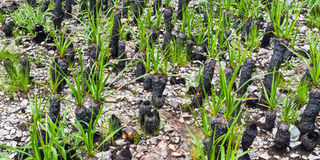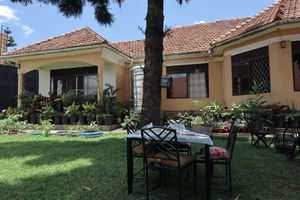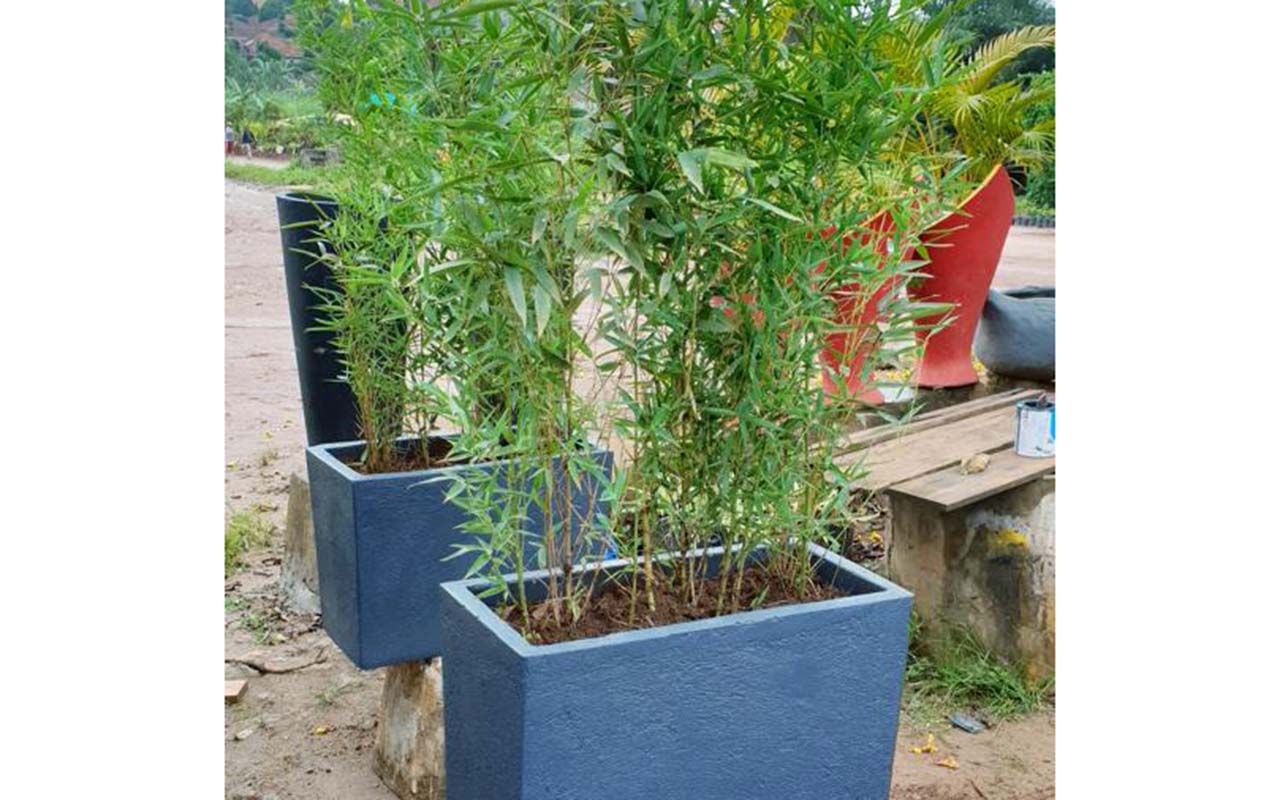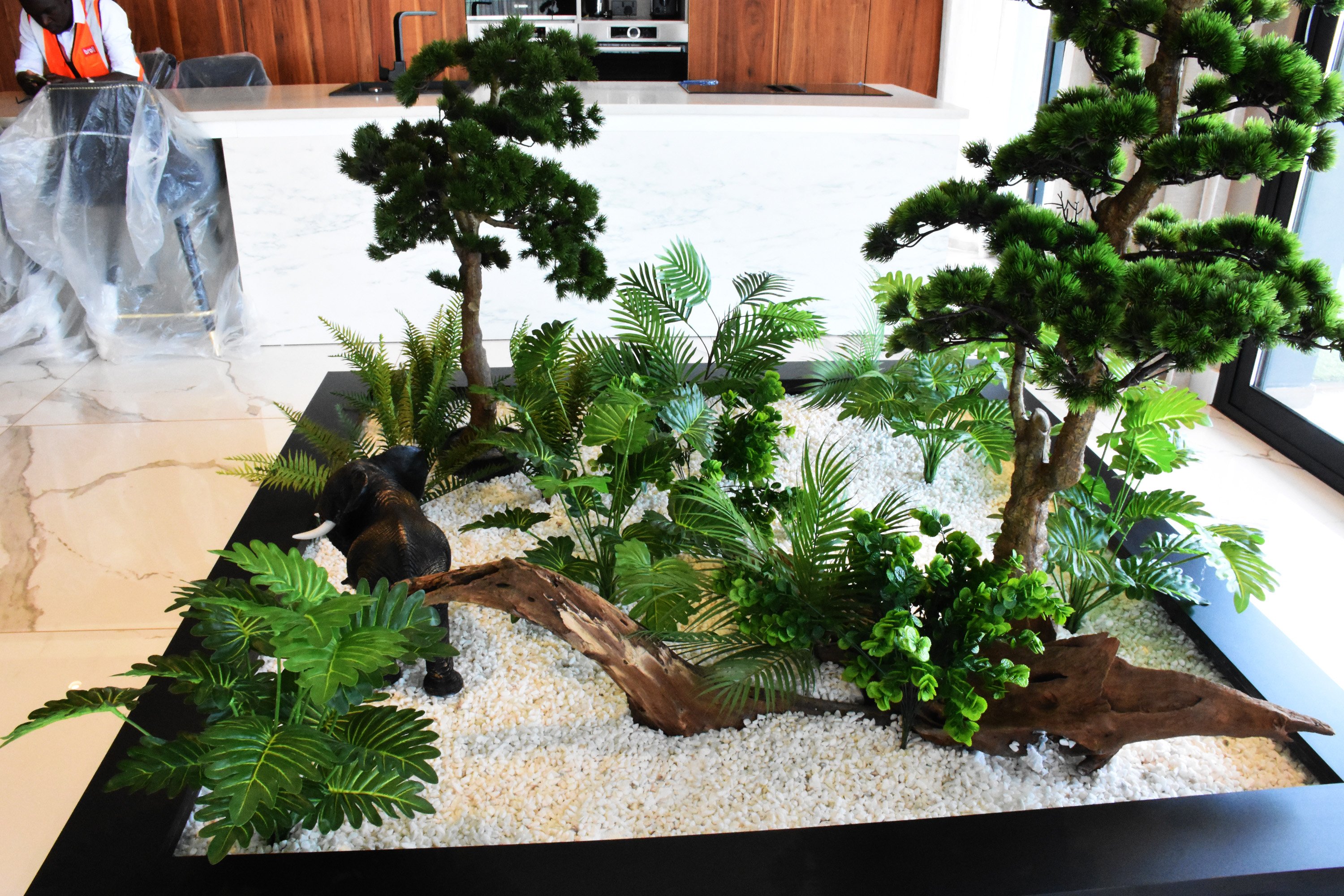
Choosing appropriate plants, can significantly reduce the risk of fire damage while preserving the beauty of your outdoor spaces. PHOTO/shutterstock.com
Firescaping is a strategic approach to designing and maintaining the landscape around a home to mitigate the risk of fire damage. By integrating fire-resistant plants, nonflammable materials, and thoughtful landscape features, firescaping helps create defensible spaces that act as barriers to slow or stop the spread of fire. This involves using hardscape elements like gravel, concrete, and stone to reduce combustible materials and breaking up large planting areas with noncombustible ground covers.
Additionally, selecting plants with high moisture content and minimising those with flammable resins or oils further enhances fire resistance. Regular maintenance, including pruning and cleaning, ensures that these fire-safe strategies remain effective, ultimately protecting the home while maintaining an attractive and functional outdoor environment.
Firescaping is an essential practice for homeowners in fire-prone areas, focusing on designing the landscape and property surroundings to reduce susceptibility to fire. Effective firescaping combines strategic landscape design with the use of fire-resistant materials and plants, creating a safer environment without sacrificing aesthetic appeal. Here is a guide to firescaping, from planning and planting to maintenance.
Planning your landscape
The foundation of a fire-safe landscape starts with careful planning. Collaborate with a landscape designer who understands fire safety guidelines and can help you create «defensible spaces» around your property.
These spaces act as buffer zones, offering protection against encroaching fires. They are characterized by a thoughtful arrangement of fire-resistant plants, materials, and features that help prevent the spread of flames.
Fire-resistant materials
Defensible spaces typically involve creating multiple zones around your home. The closest zone should be the most meticulously managed, with minimal vegetation and high use of nonflammable materials.
Hardscape elements such as gravel, concrete, stone, and decomposed granite can be used to construct walkways, patios, retaining walls, and mulch beds. These materials are crucial because they do not burn easily and help create fire-safe zones adjacent to your home.
Breaking up large planting areas with a combination of fire-resistant plants and noncombustible materials can slow down or stop a fire’s spread. Reduce the quantity and size of plants in these areas to lower the available fuel for a fire.
Grouping ground covers and shrubs in clusters rather than spreading them continuously helps create breaks that slow the progress of flames.
Avoid overcrowding plants to ensure that they do not compete for water and nutrients, which can make them more susceptible to drying out and catching fire.
Effective fire breaks
Incorporate boulders, rocks, gravel, or stone as ground cover and in pathways to establish effective fire breaks. Deciduous trees are often preferred over evergreen trees because their leaves contain more moisture, which makes them less likely to ignite. On sloped properties, ensure greater spacing between trees and shrubs compared to flatter areas, as slopes can accelerate the spread of fire.
Water features such as ponds, streams, or swimming pools can also act as fire barriers. Nonflammable driveways, walkways, and parking areas contribute to creating a safer environment.
A well-maintained lawn between your home and plantings can provide an additional layer of protection. For drought-prone regions, explore water-efficient alternatives to traditional lawns that can still offer significant fire protection.
Fire-safe decking
If you have a wood deck or are considering installing one, it is essential to address its potential as a fire hazard. Decks made from untreated wood can easily catch fire, especially if surrounded by combustible materials. Regularly clean your deck to remove leaves and other flammable debris. For added safety, choose decking materials treated with fire retardants or opt for other fire-resistant building materials.
A fully enclosed deck offers additional protection by eliminating heat traps beneath it. You can further enhance safety by using noncombustible materials such as stone, concrete, or gravel around and beneath the deck to create a fire barrier.
Choosing plants for fire safety
Selecting the right plants is a critical aspect of firescaping. While no plant is entirely fireproof, some plants are more resistant to fire due to their high moisture content. Native plants, adapted to local climates, are often more resilient and have deep root systems that help them retain water.
Many succulents are also excellent choices due to their ability to store water in their leaves, stems, and roots, making them highly resistant to fire.
Fire-resistant plants generally have moist and supple leaves, minimal dead wood, and low sap or resin content. Avoid plants with high resin or oil content, as these are more flammable.
For example, junipers and eucalyptus trees are known for their flammability due to their volatile oils and dry leaves. The Tasmanian blue gum eucalyptus, in particular, can release flammable gases that intensify fires, while juniper shrubs accumulate dry leaves and burn quickly.
Succulents and ground covers
Succulents, with their water-storing capabilities, offer not only drought tolerance but also effective fire resistance. Many succulents can thrive in a range of climates, so check with local nurseries for species suitable for your region.
Noncombustible ground covers, combined with succulents and other fire-resistant plants, can create an attractive and effective living safety shield around your home.
Maintaining your landscape
Regular maintenance is crucial for ensuring that your landscape remains fire-safe. Prune trees to keep the lowest limbs at least 6 to 10 feet above the ground. Remove dead branches, leaves, and debris from trees, shrubs, and plant beds to prevent potential fire hazards.
Regularly clear away dead and dying plants and use fire-resistant mulch or gravel in planting beds to help retain soil moisture.
Irrigation and maintenance
Maintain your irrigation system to keep plants healthy and hydrated, especially in regions with low or no summer rainfall. For native trees and shrubs not on a regular irrigation schedule, deep water them at least once a month or as needed. Familiarize yourself with local fire-safe regulations and recommendations regarding vegetation clearances to ensure compliance and maximise fire protection.
Fire-wise practices
Beyond landscape design, there are other fire-wise practices to enhance home protection. The roof is particularly vulnerable during a wildfire, so using fire-retardant roofing materials is essential.
Ensure that tree limbs are kept at least 10 feet away from rooftops, chimneys, and power lines to prevent fire contact. Regularly clean roofs and gutters to remove leaves and debris, which can easily ignite.
Firescaping is a proactive approach to creating a safer environment around your home by incorporating fire-resistant materials, plants, and strategic landscape design.
By planning defensible spaces, choosing appropriate plants, and maintaining your landscape, you can significantly reduce the risk of fire damage while preserving the beauty of your outdoor spaces. Implementing these practices not only protects your property but also enhances the resilience of your home in the face of potential fire hazards.




